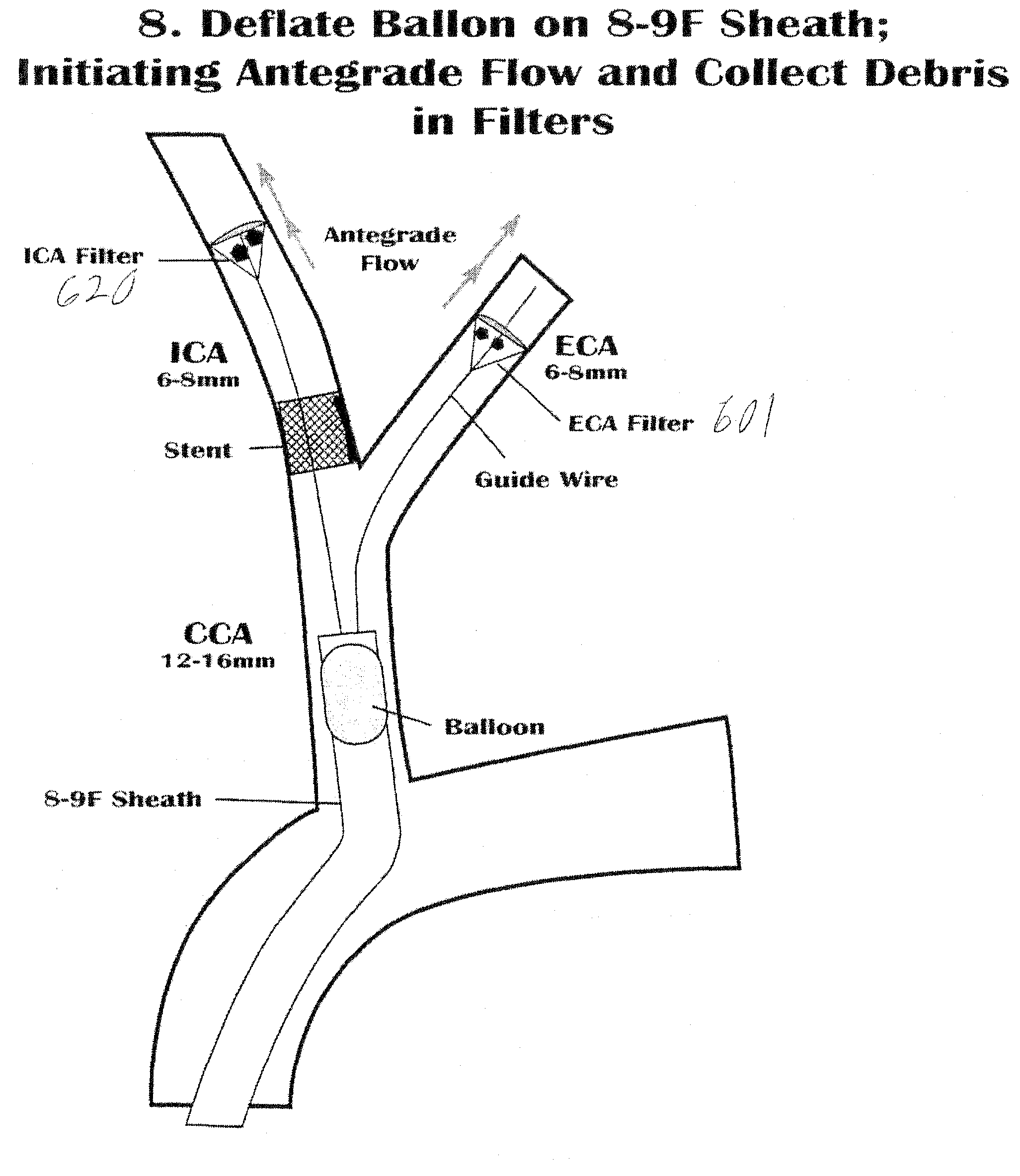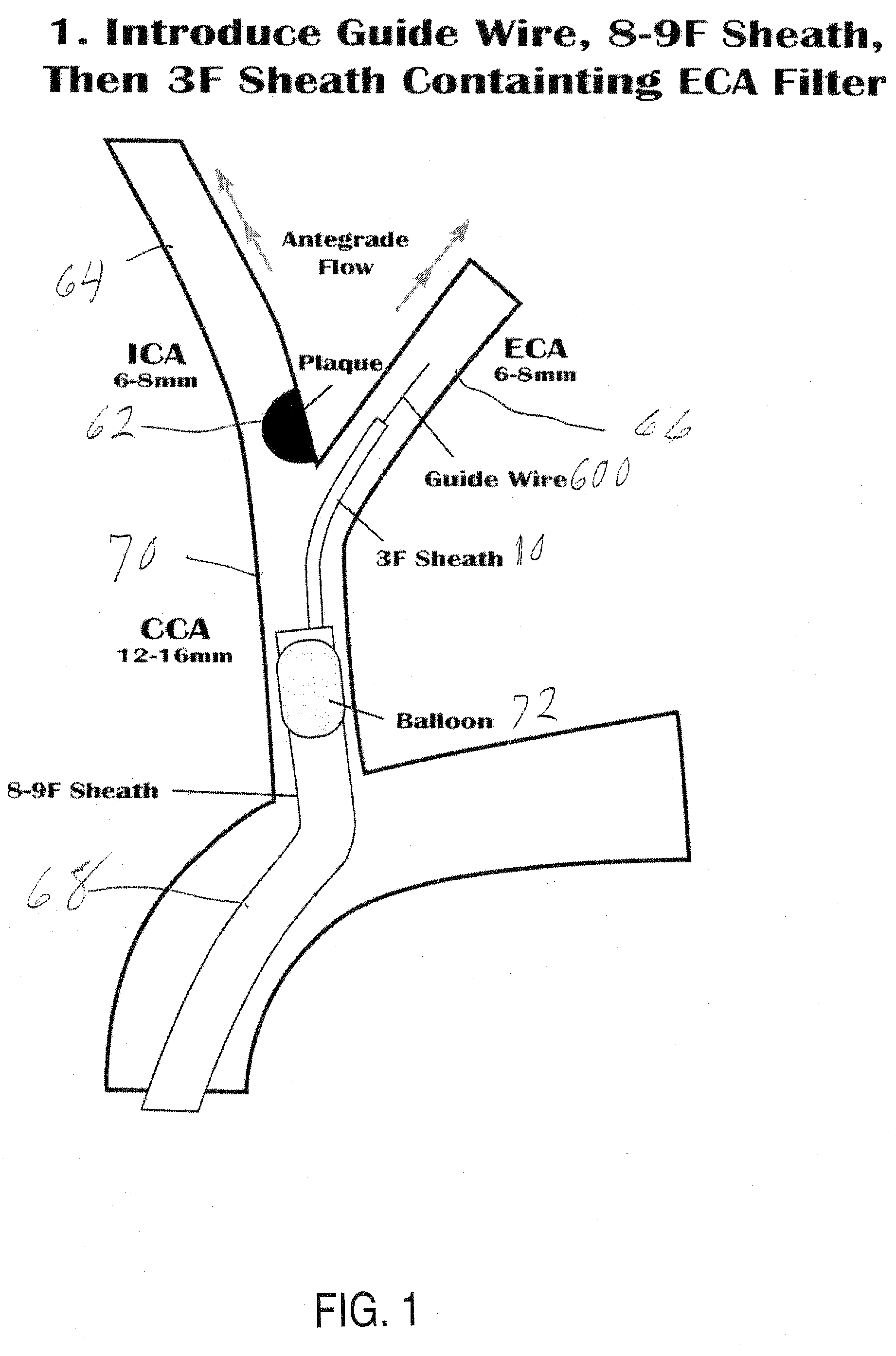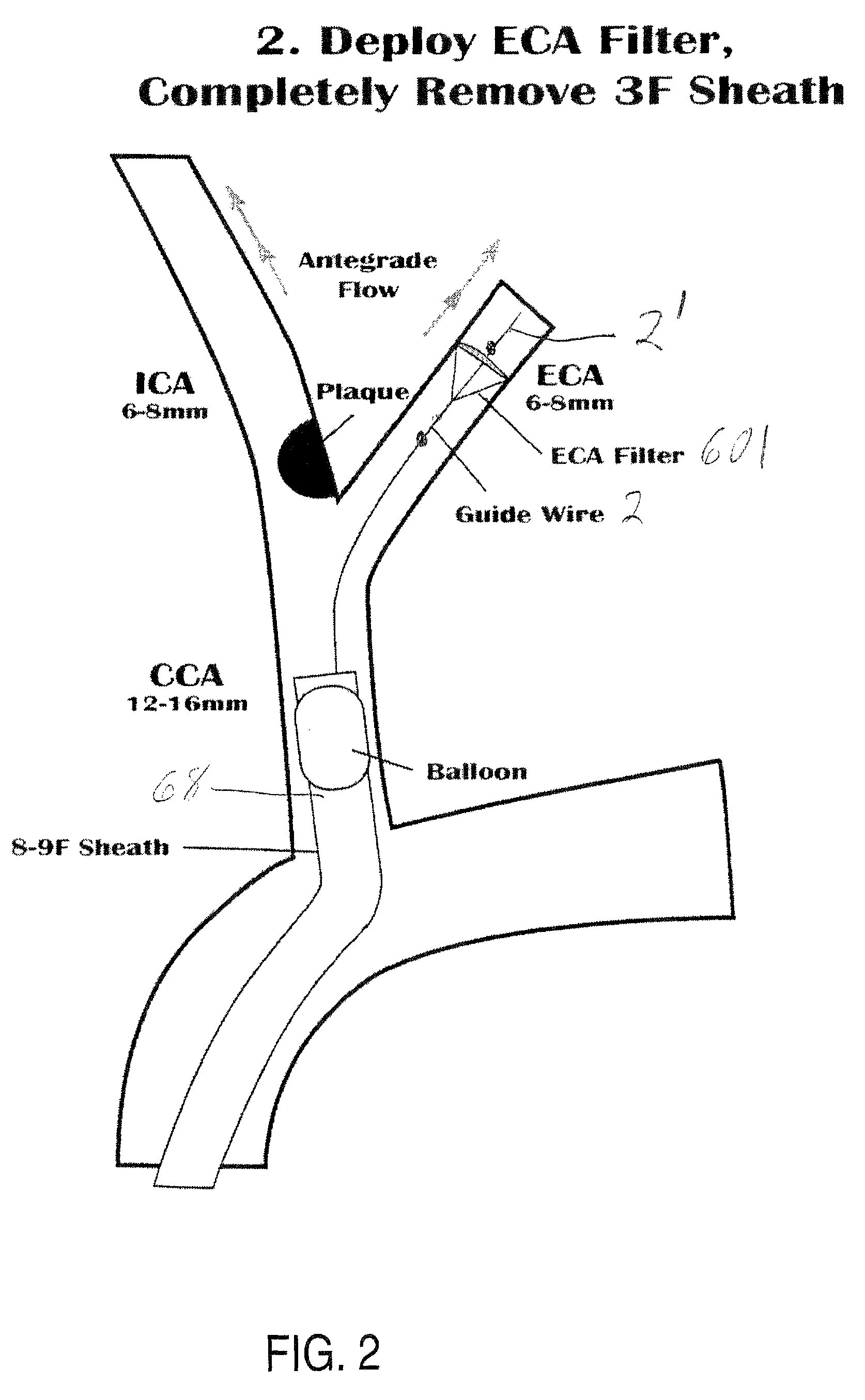Vascular filter with improved strength and flexibility
a vascular filter and improved technology, applied in the field of medical devices, can solve the problems of difficult use in tortuous arteries, filter holes not having a well-defined and constant size, and easy tear of membranes
- Summary
- Abstract
- Description
- Claims
- Application Information
AI Technical Summary
Benefits of technology
Problems solved by technology
Method used
Image
Examples
Embodiment Construction
[0028]The advantages of the invention will become more apparent after reference to the following detailed description. In the practice of the present invention, use may optionally be made of filters described and illustrated in U.S. Pat. Nos. 6,485,502 and 7,214,237, the entire disclosures of which have been incorporated herein by reference. The following Figures show a device bearing certain similarities to that shown in FIG. 9 of U.S. Pat. Nos. 6,485,502 and 7,214,237 and having components shown in other Figures, and described in those patents. Components and body features identical to those of FIG. 9 and the other Figures will be identified herein with the same reference numerals as those used in FIG. 9.
[0029]The start of a procedure according to the invention is shown in FIG. 1. First, a sheath, or guiding catheter, 68 carrying a surrounding balloon 72 near its distal end is introduced into common carotid artery (CCA) 70 by a conventional angiographic procedure. Balloon 72 is in...
PUM
 Login to View More
Login to View More Abstract
Description
Claims
Application Information
 Login to View More
Login to View More - R&D
- Intellectual Property
- Life Sciences
- Materials
- Tech Scout
- Unparalleled Data Quality
- Higher Quality Content
- 60% Fewer Hallucinations
Browse by: Latest US Patents, China's latest patents, Technical Efficacy Thesaurus, Application Domain, Technology Topic, Popular Technical Reports.
© 2025 PatSnap. All rights reserved.Legal|Privacy policy|Modern Slavery Act Transparency Statement|Sitemap|About US| Contact US: help@patsnap.com



